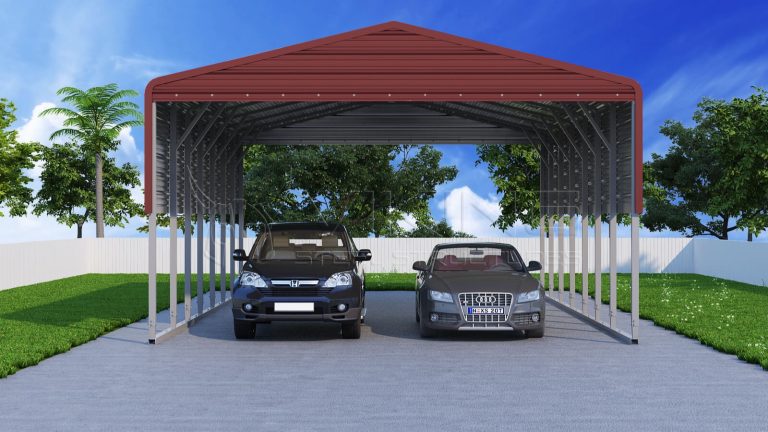The Role of Anchors & Screws in Metal Building Strength

When you picture a strong metal building, what comes to mind first? Thick steam beams? Heavy roof panels? Most people never think about the tiny components that keep everything standing firm; they are anchors and screws. These small parts quietly hold the whole building together. Without them, even the most expensive building can shake. It can shift, or worse, collapse under stress.
Anchors and screws hold your entire structure in place, preventing these issues. They don’t just have things in place; they connect your building to the ground and keep the frame and panels tightly secured. So, whenever rain or snowfall occurs, the structure remains firm and doesn’t sag or collapse.
So, if you think knowing about anchors and screws is the technical part and work of installers, think again. It is also crucial for you to have knowledge of these elements, so you can make informed decisions and ensure a strong structure for yourself.
What Are Anchors and Screws?
Let’s keep it simple by knowing about anchors and screws first. You can understand their roles better once you are familiar with them.
Anchors: They connect the building’s frame to its foundation. They are fixed into the ground or concrete to resist uplift, sliding, or shifting forces.
Screws: They hold the roof panels, wall sheets, trims, and purlins in place. They keep everything tight and aligned, protecting against leaks and movement.
Main Differences Between Anchors and Screws
Since you will be learning about both anchors and screws, we want to ensure you don’t get confused about their roles. This is why you must know the core difference between them.
While they may look similar in shape, their functions are quite different:
- Anchors are responsible for structural stability. They secure the entire building to the foundation.
- Screws maintain surface integrity. They hold sheets and trims together tightly.
- Anchors deal with shear, uplift, and tension loads, while screws deal mostly with wind uplift on panels and water sealing.
- Anchors are usually larger and made of heavy-duty steel. They are deeply embedded in the foundation. Screws are smaller and used in greater numbers across the roof and walls.
Types of Anchors and Screws Used for Steel Structure Installation
Every steel building relies on specific types of fasteners to stay grounded and weather-tight. Choosing the correct type ensures safety and affects how well the structure performs over time. Here’s a look at the most popular anchors and screws used in steel structure installations that enhance the structure’s strength and durability.
Types of Anchors for Steel Structures:
Concrete Anchors-
Concrete anchors are the most commonly used fasteners for permanent steel buildings. They are embedded deep into a cured concrete slab or footing to lock the base rails and columns securely. Once tightened, they provide excellent resistance against wind uplift and lateral forces. They are ideal for steel garages, barns, warehouses, and other buildings with a concrete foundation.
Asphalt Anchors-
Asphalt anchors are used when installing a structure over asphalt surfaces. Instead of relying on expansion, they use a special adhesive grout to bond with the asphalt. This makes them suitable for temporary or semi-permanent installations like carports, storage sheds, or light workshops. Though not as strong as concrete anchors, they still provide solid anchoring when concrete is not an option.
Mobile Home Anchors-
Also known as auger or helical anchors, these are twisted deep into the soil. They are commonly used for ground installations where there is no hard surface. Mobile home anchors are ideal for areas with loose soil, such as farms or open land. They are also widely used in temporary prefab metal structures or portable steel buildings because they can be installed and removed without damaging the ground.
Wedge and Expansion Anchors-
These are often grouped with concrete anchors, but we need to talk about them here. Wedge anchors expand after insertion and lock tightly inside the concrete hole. Expansion anchors use a sleeve mechanism to create strong friction against the hole walls. Both types are excellent for high-wind areas or heavy-duty applications, like triple wide metal buildings or tall commercial units.
Types of Screws for Steel Structures:
Screws keep the panels, trims, and roofing tight and weather-resistant. Choosing the right screw type affects not only strength but also how well your building resists leaks and rust.
Self-Drilling Screws-
These screws have a drill bit tip. It allows them to cut through metal in one motion. They are fast to install and commonly used for wall and roof panels.
Self-Tapping Screws-
These require a pre-drilled hole but offer a very snug, secure fit to your pre-engineered structure. They are often used in critical structural connections where complexities are high and precision is non-negotiable.
Color Metal Screws-
These screws are designed to match the panel color, giving your building a neat, finished look. They are coated to resist corrosion and fading. Beyond aesthetics, they perform the same function as standard screws. This way, they keep panels firmly attached while blending seamlessly with the exterior.
Lap and Stitch Screws-
Lap screws join two overlapping panels, while stitch screws fasten trims and smaller metal sections together. These are essential for sealing gaps and preventing leaks. As a result, they also ensure the strength of the building.
The Role of Anchors in Installation and Strength
You may already know that anchors are the backbone of your structure’s stability. But they are so when properly installed. They transfer loads from the building frame into the foundation. The type of anchor used depends on various factors, and the type of foundation for a metal building is one of them, but it is the most crucial one.
- Concrete slabs often use wedge or expansion anchors.
- Pier foundations may use anchor bolts placed during concrete pouring.
- Skid foundations may use ground anchors or augers.
The number and spacing of anchors are determined by local building codes, wind zone ratings, and structure size. For example, a triple wide metal building in a high-wind area will need more and stronger anchors compared to a small carport.
During installation, each anchor must be twisted to the manufacturer’s specifications because proper embedment depth ensures maximum holding power. It also inspects each anchor after curing and before framing starts, as this allows issues to be caught early.
For most concrete slabs, wedge anchors are preferred because they expand after insertion, locking tightly into the concrete. However, the exact choice depends on your soil condition, slab thickness, and wind rating. For this, you must consult with your builder, as it’s the safest route.
So, if you have been searching for “What anchor type is best for my slab?”, you might have got the answer after learning about anchors here.
The Role of Screws in Installation and Strength
Screws are often underestimated, but they are crucial in ensuring your panels stay secure and strong. Each screw holds a small portion of the roof or wall in place. When hundreds of screws are installed correctly, they act as a shield against uplift forces and leaks.
- Self-drilling screws: These fasteners cut through metal in one step and fasten the prefabricated building installation process.
- Self-tapping screws: These screws require a pre-drilled hole. But they provide a snug fit.
Screw placement is carefully planned to align with purlins and girts. Proper spacing prevents panels from flapping in the wind. But, overtightening can crush washers or damage panels, while under-tightening can lead to leaks.
For example, in metal office buildings, correct screw alignment is key to maintaining insulation performance and exterior appearance. Screws must also be corrosion-resistant to avoid rust streaks on panels over time.
Many times, metal building buyers get worried, and they ask, “How often should I check and tighten screws again? It’s a good idea to inspect screws at least once a year, especially after harsh weather. When you retighten loose screws early, it prevents leaks and extends the life of the panel.
Corrosion, Rust, and Fastener Lifespan
Here is a reality check!
Even the strongest anchors and screws can fail if they corrode. Moisture, salt, or chemicals can eat away at these elements. Over time, this leads to weak connections and possible panel blow-offs. To safeguard your metal building from rusting, choose galvanized or stainless-steel fasteners with protective coatings. Use neoprene washers to prevent water intrusion. Moreover, regular inspections are essential, especially in coastal or humid areas. If rusting has developed, don’t delay in replacing screws and anchors, it will save you from costly damage later.
Common Installation Mistakes That Weaken Buildings
Many structural failures happen not because of weak materials, but because of careless installation. Here are a few mistakes to avoid:
- Using the wrong anchor type or depth.
- Skipping proper torque settings.
- Placing screws in the wrong location or unevenly.
- Overdriving screws and damaging washers.
- Ignoring local code spacing for anchor placement.
In prefab metal structures, skipping these small details can lead to serious stability issues later.
Ready for Lasting Strength? Choose the Right Partner for Your Project
Only the right metal building dealer can offer correctly anchored and screwed steel structures that stand strong for decades. And partnering with Viking Steel Structures ensures every detail is considered to build a strong space. From selecting the right anchor type for your foundation to using high-quality screws that resist corrosion, every detail matters for us. Our solutions perform flawlessly against wind, rain, and daily wear. Moreover, with our rent-to-own metal building option you can secure structures without any financial stress.
Don’t worry about the quality as we provide Amrican-manufactured steel buildings and offer 20 years warranty. You can contact us at 877-801-3263 whenever you want and get specific details about your project. We offer personalized services.
So, choose wisely and give your project the solid foundation it deserves.

Looking for a metal building that fits your needs?

